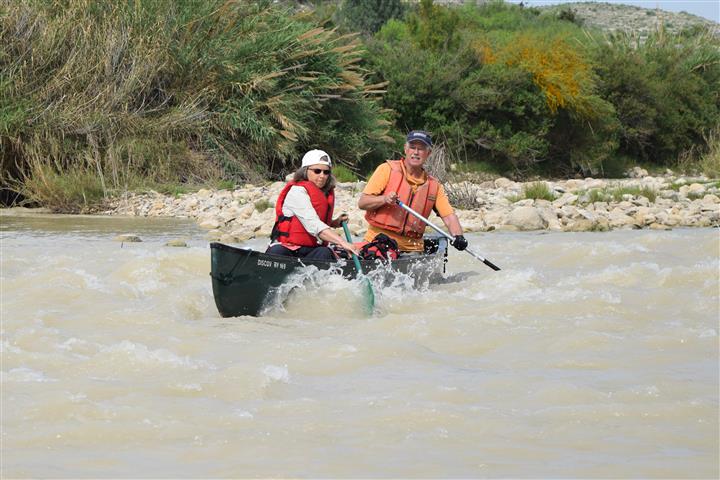Rio Grande
The Rio Grande in the United States, known as the Río Bravo (or, more formally, the Río Bravo del Norte) in Mexico, is a river, 1,885 miles (3,034 km) long, and the fourth longest river system in the United States. The river has, since 1848, marked the boundary between Mexico and the United States Rio del Norte was the most common name for the upper Rio Grande (roughly, within the present-day borders of New Mexico) from Spanish colonial times to the end of the Mexican period in the mid-19th century. The use of the modern English name Rio Grande began with the early American settlers in south Texas. By the late 19th century, the name Rio Grande for the entire river, from Colorado to the sea, had become standard in the United States.
The Rio Grande was designated as one of the American Heritage Rivers in 1997. The Rio Grande rises in the east Rio Grande National Forest in the U.S. state of Colorado. It is formed by the joining of several streams, just east of the continental divide. From there, it flows through the San Luis Valley, then south into New Mexico. Millions of years ago, the Rio Grande ended at the bottom of the Rio Grande Rift in Lake Cabeza de Vaca. But about one million years ago the stream was "captured" and began to flow east. The geology that created the 1,800-mile long Rio Grande River, was a millions-of-years-ago rift, or crack, between the Sangre de Cristo Mountains and the ranges to the west. Volcanic activity filled the crack with lava. About 3 million years ago, water draining from the San Juan Mountains of Colorado began carving the river that dissects New Mexico and, eventually, the west and southwest boundary of Texas and the Texas-Mexico border, before emptying into the Gulf of Mexico.
The Rio Grande rises in high mountains and flows for much of its length at high elevation. In New Mexico, the river flows through the Rio Grande Rift from one sediment-filled basin to another, cutting canyons between the basins and supporting a fragile bosque ecosystem in its floodplain. But before that runoff settles down to a placid river, it rumbles through far northern New Mexico. The Rio Grande flows out of the snowcapped Rocky Mountains in Colorado from its headwaters in the San Juan Mountains, and journeys 1,900 miles to the Gulf of Mexico. It passes through 800-foot chasms of the Rio Grande Gorge, a wild and remote area of northern New Mexico. In 1968, the Rio Grande and Red River were among the first eight rivers Congress designated into the National Wild and Scenic River System to protect outstanding resources values.



